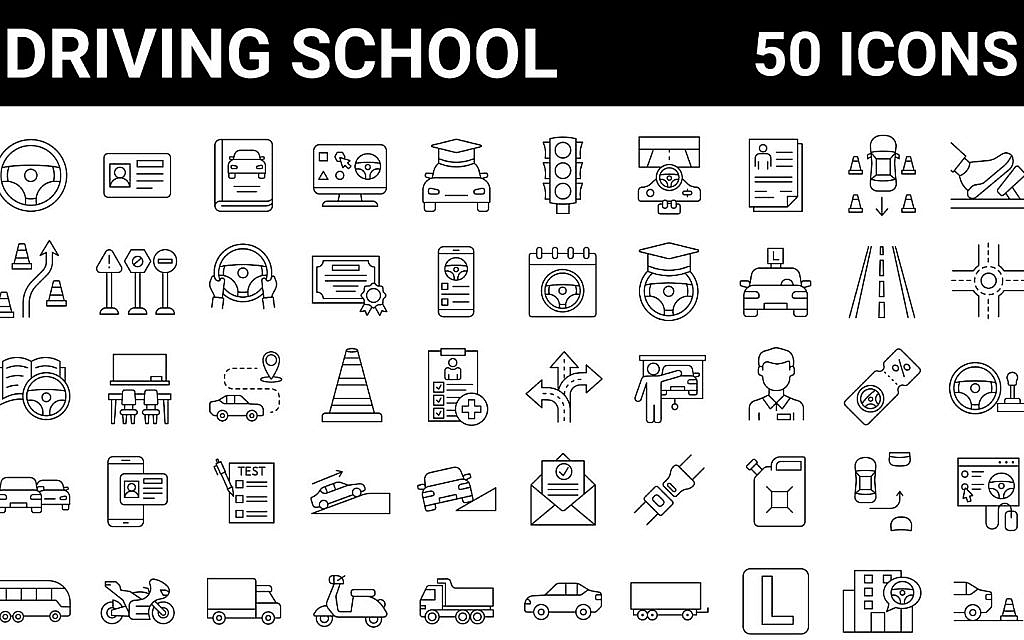How to Become a Truck Driver in Dubai
- Steps to Become a Truck Driver
- Registration Process
- Classes
- Test to Get Driving Licence
- After the Test process
- FAQs
Strategically located at the crossroads of Asia, Europe and Africa, Dubai handles massive volumes of goods logistics. The seamless movement of cargo has positioned Dubai as a key player in global supply chains. As trade volumes continue to rise, so does the demand for skilled logistics professionals, especially truck drivers. The truck drivers play a critical role in connecting warehouses, ports and markets across the UAE. That said, becoming a truck driver is a lucrative earning opportunity that requires minimal education.
While the process may seem straightforward, becoming a truck driver in Dubai involves several key steps. Here’s a step-by-step guide to help you navigate the journey to becoming a licensed truck driver in the emirate.
Step-by-Step Guide to Becoming a Truck Driver in Dubai

The following are the steps to become a licensed truck driver in Dubai.
Eligibility Criteria
To become a heavy truck driver in Dubai, you must meet specific truck driving requirements, which include:
- Applicant must be 20 years of age or older
- The applicant should be Emirati or hold a valid residence visa
- Medical fitness certification
- Eye test certification
Required Documents

To become a heavy truck driver in Dubai, you’ll need to provide the following documents:
- Original Emirates ID
- Licences from your home country or any other country are not accepted for the heavy truck category in Dubai.
- For LTV licence holders, practical classes are 10 hours and for non-holders, it is 20 hours
- Electronic eye test from RTA-approved eye test centres
- Medical fitness (if the applicant holds a ‘Driver’ visa or is aged above 65 years)
How to Register for a Truck Driving Course
To start your journey, choose from recognised driving schools in Dubai such as Galadari Motor Driving Centre (GMDC), Al Ahli Driving Centre, Emirates Driving Institute (EDI) or Drive Dubai.
These schools are all authorised by RTA to offer heavy truck licence training courses. Enrolling in an RTA-approved institute is the first step in the process to become a commercial driver in Dubai.
Steps to Register
The following are the steps to register with an RTA-approved driving school in Dubai for a truck driving course:
Visit the chosen truck driving school in Dubai in person or register online via their official website
- Submit the required documents (mentioned above)
- Open a traffic file (learner’s permit) at the school, which will be processed with the RTA
- Pay the initial registration and file opening fees
- Complete the enrolment process to take driving classes
Fees to Register
File opening/registration fees: AED 800 –1,000 (varies by school). Additional fees apply for tests and licence issuance. The total cost for the full course (including all training and tests) typically ranges from AED 4,500 to AED 7,000, depending on the number of lessons needed and the institute you choose.
Practical and Theoretical Classes in the Truck Driving Course
Drivers enrolled in the course receive both theoretical and practical training. The classes equip them with the knowledge and experience needed to safely operate and control a heavy-duty truck.
Theory Classes
Drivers must attend 8 or 9 mandatory theory classes, depending on the driving school. These classes are offered in English, Urdu, Arabic and Hindi and can be attended either online or at the school.
Topics covered in these classes include:
- The attitude and responsibilities of a driver
- Traffic signs and rules of the road
- Managing risk
- Understanding the driving environment and other vehicles on the road
- Dealing with hazards and emergencies
- Vehicle knowledge and basic maintenance
- Handling an articulated truck
- Planning routes, managing traffic violations and studying accident case studies
Practical Training
The practical training involves a minimum of 20–25 hours of classes. The stages of practical training include:
- Basic vehicle operation in the yard, including estimating height, securing loads and stopping on gradients
- Driving in light to medium traffic at speeds of 40–60 km/h
- Driving in medium to heavy traffic at speeds up to 80 km/h, including independent driving
- Special skills training in the yard
- Driving on roads with a loaded semi-trailer, following the RTA test requirements
Test to Acquire a Truck Driving License

To obtain a heavy-duty truck licence in Dubai, drivers must complete a series of tests. Here are the details:
Theory Test
The theory test for a heavy truck licence is a multiple-choice exam administered by the RTA. It usually includes around 100 questions covering at least 10 topics related to traffic laws, UAE traffic signs and safe driving rules specific to heavy vehicles.
Drivers need to score at least 50% to pass the theory exam.
Practical Test
After passing the theory test, you will move on to practical assessments, which include:
- Yard Test: This involves manoeuvring and parking the heavy vehicle in a controlled environment, focusing on skills like reversing, precision parking and controlling the vehicle in tight spaces.
- On-Road Assessment: This stage tests the ability to drive in real traffic conditions, demonstrating proper vehicle control, safe driving habits and adherence to traffic laws.
What to Do After Passing the Driving Licence Test
After passing all the required assessments, including the RTA theory test, internal assessments and on-road tests, make sure you complete the remaining steps:
- Complete all mandatory theory lectures, practical training hours and pay all required fees.
- Ensure your learning permit and RTA file are valid. If your RTA file has been inactive for 6 months, it may expire and need to be renewed before you can proceed with the licence issuance.
- Once all requirements are met, you will receive a temporary driving licence valid for 7 days, usually sent via email.
- You must present your original Emirates ID when the licence is issued.
- The official heavy truck driving licence (Category 4) is issued on the same day, allowing you to legally drive heavy trucks in Dubai.
FAQs
Can foreigners apply to become truck drivers in Dubai?
Yes, foreigners can apply to become truck drivers in Dubai if they have a valid work visa and obtain a UAE heavy vehicle driving license
How long does it take to become a licensed truck driver in Dubai?
Becoming a licensed truck driver in Dubai usually takes a few weeks, including 20–25 hours of practical training and passing the required theory and road tests.
How can I find a truck driving job in Dubai?
You can find heavy vehicle jobs in Dubai by exploring major job portals like dubizzle, which list hundreds of current vacancies for truck drivers.
This was all about the process of how to become a truck driver in Dubai. From understanding the city’s logistics landscape to completing every step required for your Category 4 license. The process is clear and structured: you must meet age and residency requirements, submit the right documents, register at an RTA-approved driving school and complete both theory and practical training. After passing all tests, your license is issued, allowing you to join a sector that is vital to Dubai’s continued growth as a global trade hub.
Whether you’re just starting your career or looking to expand your fleet, finding the right truck for sale in the UAE is an important step.
Stay tuned to dubizzle’s auto blogs for more updates on driving licences.
Comments
Post a Comment